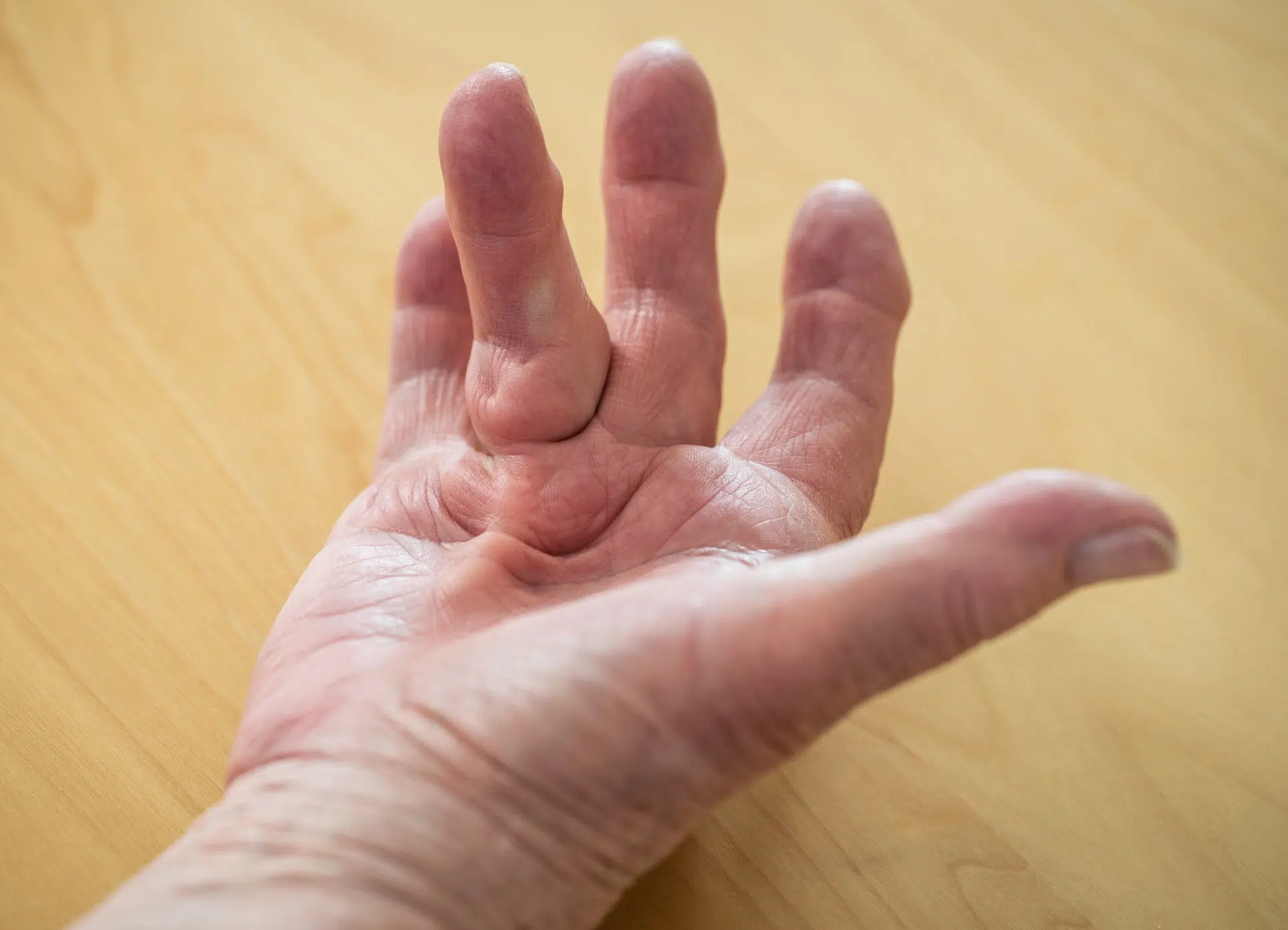The origin of Dupuytren’s disease is unknown and complex. It is a hereditary disease that affects the subcutaneous tissues of the palm (fascias), located between the skin and tendons. Over time, these tissues can thicken, forming nodules or flanges (fibrous cords) which can retract. This retraction progressively limits the normal extension of the fingers, particularly the 4th and 5th fingers, and can eventually lead to severe hand deformity.
Leman hand clinic
Dupuytren’s disease
Dupuytren’s disease is a little-known pathology that mainly affects the palm and fingers. The disease is painless, but can progressively lead to significant functional limitations of the fingers. Treatment relies on surgical intervention when the patient is no longer able to lay his or her hand flat.

What is Dupuytren’s disease ?
How can Dupuytren’s disease be explained?
Although the exact origin of Dupuytren’s disease remains uncertain, genetic factors play a major role. The disease generally occurs after the age of 50 in men, and can also appear later in women. It therefore particularly affects middle-aged and elderly people, with a higher prevalence in men than in women.
Contrary to popular belief, there is no scientific proof that manual work is a trigger for the disease. Family history is an important risk factor, suggesting a genetic predisposition. Dupuytren’s disease is also more common in people suffering from diabetes, as well as in individuals who consume tobacco or alcohol in excess.
The disease tends to be more severe and recur more frequently if it occurs in a younger patient.
What are the symptoms of Dupuytren’s disease?
Dupuytren’s disease causes knots and thick cord of tissue beneath the skin of the palm (nodules), usually at the base of the fingers. Over time, the finger may retract into a bent position with difficulties to straighten them completely. The 4th and 5th fingers are most often affected, which can interfere with daily activities such as reaching into a pocket, putting on a glove or laying the hand flat.
How is Dupuytren’s disease detected?
Diagnosis of Dupuytren’s disease is based primarily on clinical examination. The hand surgeon will assess the presence of nodules or cords and test the patient’s ability to fully extend the fingers. A common test is to ask the patient to place the hand flat on a table. No further examination is usually necessary, but in some cases an ultrasound or MRI scan may be performed to rule out associated pathology.
The disease can also appear on the soles of the feet (Ledderhose disease) or on the genitals (Peyronie’s disease).
How is Dupuytren’s disease treated?
The choice of treatment depends on the severity of the retraction and the functional discomfort it causes. To date, there is no curative medical treatment for Dupuytren’s disease.
Surgical treatment is not recommended as long as the patient can place his or her hand flat on a table and apply pressure with the other hand.
The choice of surgical treatment for Dupuytren’s disease depends on the location and severity of the involvement. It may involve severing the palmar cord with a needle, or completely removing the diseased tissue in more advanced forms.
The most common technique is aponeurectomy Dupuytren’s surgery, where diseased tissue is excised to free the retracted fingers. This procedure can be performed openly or minimally invasively, depending on the case. In early or less severe forms, percutaneous aponeurotomy may be considered, simply by severing the cord with a needle.
After this type of hand surgery, occupational therapy is often necessary to restore hand mobility and strength, with recovery often rapid, with a marked improvement in finger mobility and extension.
Useful links :